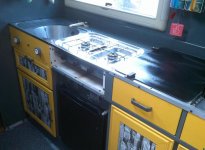wildebus
Full Member
- Messages
- 7,786
The long thin cable seems to be promoted on Canal Boats when adding Lithium to create a Lead/Lithium Hybrid battery setup. Why people don't want to do things right is beyond meReason I asked about cable sizing is, I have actually seen 'experts' on boat forums telling people how long and extra length of cable they need to fit to stop problems.
Personally I went for a B2B for two reasons. 1 because I did not know how much spare capacity my alternator had but was fairly certain it could provide me with 30A constantly. 2 it gives a proper charge cycle.
You could get relays but I don't think that Victron Li was about when I go mine, if it was nobody was talking about it but that wouldn't limit the draw
There are actually three different Victron Cyrix Battery Combiners for Lithium, the Cyrix -li being the most common and simple to use. It is in essence the same as the Cyrix -ct. You are correct, they don't limit the draw so you have to ensure the draw is under the rated current (120A).
The key difference between the -ct and -li is the disconnection voltage. the ct is mean for Lead Acid and will disconnect at a voltage that is below the resting voltage for Lithium (so not suitable, which is why the -li is the right option). No VSRs on the market are suitable for Lithium as they once connected they will never disconnect.
Two reasons why a B2B is preferable ... It provides a current limiting function so acts as a safety net against overloading; and it provides a regulated voltage and ensures the battery will charge at the right voltage rather than the random voltage an alternator may put out (some don't above 14V, some output 15V).


